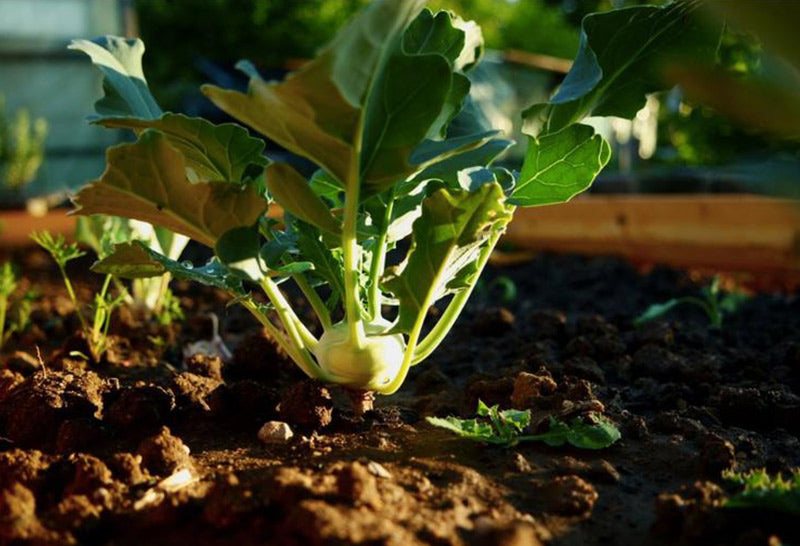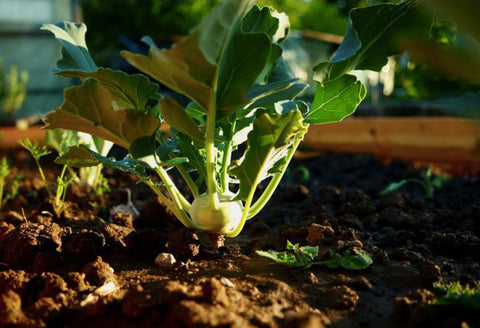
How To Bring Soil Back To Life With Regenerative Biodynamic Farming
We now live in a world where our food has been so weirdly transformed that its cellular state is almost unrecognizable in nature. The farming industry has become more and more like a Jekyll and Hyde experiment to build the biggest monster possible without stopping to consider the after effects. Our soil, and the food that grows out of it, has rapidly caused new mutations and genetic anomalies in our children and youth like we’ve never seen before.

Despite all of this going on, there is hope, but we need change, and we need it now.
It all begins with changing our idea of agriculture, and a farm being an industrial, mass produced factory that pumps out low quality products. We must remember that a farm is a whole organism that must be cared for in its entirety, and view it as a developing organism that we must nurture and take pride in.
Regenerative biodynamic farming is the solution to the state of emergency in the current mainstream agricultural industry. The alternative biodynamic methods have the vision of the whole organism at the core, and demonstrate that we can regenerate our soils, and regrow our roots the way that nature intended. We know that we can grow healthy, nutrient rich food from nutrient rich soil, and that is where we begin.
But first, let’s find out more about the ideas behind biodynamic farming in this video by Dr. Mercola, which outlines some of the main principles.
Where it all began
Biodynamic farming was first introduced in 1924 by the Austrian scholar, Rudolf Steiner. His philosophy suggests that not only the physical, but also the esoteric aspects of the whole system, need to be cared for to be successful. It’s the ultimate ecological, ethical, and holistic approach to agriculture.
See the below diagram from whiteleafprovisions.com that outlines the main elements of a biodynamic farm.

What can you do as an individual grower in your garden?
Although organic farming is well understood and embraced throughout most western countries, biodynamic farming is the next level of commitment to a completely nutrient dense, ethical system of food production. You really must begin with your mindset.
Consider these questions for your own system;
- Do you enjoy gardening? Are you doing it for the right reasons?
- Do you plant the same produce in the same plot each time?
- Is 10% of your space completely untouched natural landscape?
- Do any animals visit your garden daily? If so, what can you do to improve their well being?
- Are you using organically processed fertilizers from your own system?
- Do you have any lakes, streams or water bodies in your garden, or nearby? What are you doing to ensure they are healthy?
- When do you plant your crops? Are your planting times aligned with the lunar calendar?
To start the reincarnation process back to a healthy organism that the land once was, we must look to where the first seeds of our little organisms burst open, and begin to lay their roots – underground – in our soils.
Get started with your soil
The Biodiversity Association says that “the diversity of plant and animal life can be developed over time, starting with a few primary crops and one or two species of animals (even as small as earthworms or honeybees), and adding more species as the farm organism matures.”
Indeed, a great first place to start putting your new mindset into practice is with your soils. This snippet from an article by Dr. Mercola sums up the way a conventional, organic and biodynamic farmer would approach an issue with their soil fertility.
“If a farmer is having a fertility issue, in conventional farming, a conventional farmer might say, ‘Let’s just bring in those synthetic fertilizers.’ An organic farmer might say, ‘Let me look and see what organic fertilizers I can bring into the farm.’ That’s a step better, but you’re still mining a natural resource and importing it to the farm. A biodynamic farmer’s going to say, ‘What is it about my farm system that isn’t capable of delivering the fertility that my crops need?’
The answers come from a biodynamic toolbox, which may include green manures, composting, cover cropping and incorporating animals. This mindset is quite different. There are eight Biodynamic preparations. They’re made from materials a farmer can find on the farm. They’re used as compost amendments, foliar sprays and soil amendments.”
The first Biodynamic Preparations you should start with are:
Horn Manure Spray – Horn manure is prepared by fermenting cow manure in a cow horn underground for 6 months starting in Autumn. Once fermentation is completed, the manure should be sprayed in the garden to stimulate the growth of roots and humus.
Horn Silica Spray– This preparation is made of quartz powder that is also buried underground in a cows horn for 6 months during spring and summer. The contents should then be used as a foliar spray to stimulate and regulate growth in the garden.
The below six preparations should be used in diluted amounts in compost to enrich soils:
- Yarrow blossoms (Achillea millefolium)
- Chamomile blossoms (Chamomilla officinalis)
- Stinging nettle (whole plant in full bloom) (Urtica dioca)
- Oak bark (Quercus robur)
- Dandelion flowers (Taraxacum officinale)
- Valerian flowers (Valeriana officinalis)
The ATTRA say that “Biodynamic preparations are intended to help moderate and regulate biological processes as well as enhance and strengthen the life (etheric) forces on the farm. The preparations are used in homeopathic quantities, meaning they produce an effect in extremely diluted amounts. As an example, just 1/16th ounce – a level teaspoon of each compost preparation is added to seven- to ten-ton piles of compost.”
If you begin to see your garden system as a whole and you try to promote a wider array of species within it, you will certainly start to see your crops become more abundant as the flow of love and unity run through them.
For more information about biodynamic farming techniques visit the Biodynamic Association’s website.



